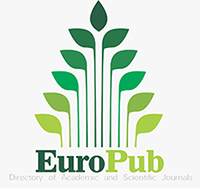Roles of oxidative stress and antioxidant system in pathogenesis of lung diseases
Lung and Oxidative Stress
DOI:
https://doi.org/10.5281/zenodo.7780487Keywords:
lung, oxidative stress, antioxidant system, oxygen radicals, free radicalsAbstract
Lung tissue can be damaged in different ways by xenobiotics (paraquat, bleomycin ..), inflammation, ischemia reperfusion, exposure to mineral dust or even normobaric pure oxygen levels. Reactive oxygen species are partially responsible for observed pulmonary tissue damage. In this review, various mechanisms leading to toxicity and protection mechanisms of the human body are described. Reactive oxygen species cause bronchoconstriction, increase mucus secretion, and cause microvascular leakage leading to edema formation. Reactive oxygen species can cause an autonomic imbalance between muscarinic receptor mediated contraction and β-adrenergic mediated relaxation of pulmonary smooth muscle. Vitamin E and selenium have a regulatory role in this balance between these two receptor responses. Autonomic imbalance may play a role in the development of bronchial hyperresponsiveness that occurs in lung inflammation. Finally, determination of antioxidant enzyme regulations associated with different lung diseases may lead to new diagnosis and treatment approaches for these acute or chronic lung diseases.
Downloads
Downloads
Published
How to Cite
Issue
Section
License

This work is licensed under a Creative Commons Attribution-NonCommercial-ShareAlike 4.0 International License.






